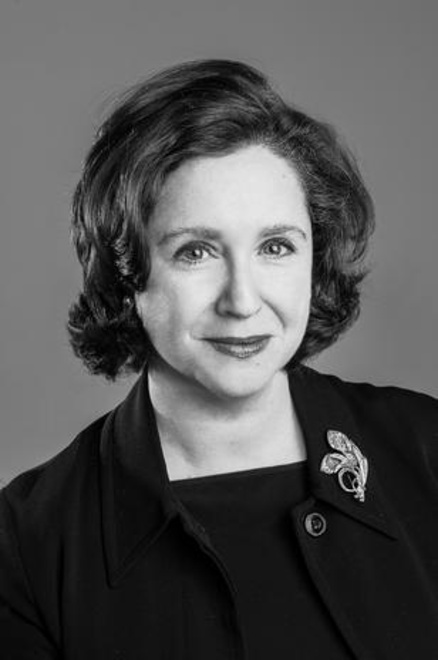
Cynthia Coleman Sparke (MA 2001) has consulted on Russian works of art for Bonhams London since 2007. A graduate of Smith College, she was previously a senior appraiser for Chubb Insurance in London and the head of the Russian department at Christie’s. She has also worked for the Hillwood Museum and Gardens in Washington, D.C, and on the Alexander Palace Project for the World Monuments Fund in St. Petersburg, Russia. Her book, Russian Decorative Arts, was published in 2014 by the Antiques Collectors’ Club.
What attracted you to Bard Graduate Center’s MA program?
After a few years of running the Russian department for Christie’s in New York, and consulting briefly at Hillwood Museum in Washington, D.C., I became aware that I’d had phenomenal access to a large volume of pre-Revolutionary objects but little time to study them in depth. Material culture must be sourced, valued, photographed, and catalogued at quite a clip in the auction world. Bard Graduate Center, with its brand new graduate opportunity offering a two-year program, beckoned with an incredible teaching staff and fabulous library that seemed to suit me perfectly. I knew the workload would be tough and the standards rigorous, but, having a pretty full CV when I matriculated, I rather smugly underestimated quite how challenging it would be.What was your focus of study here?
From my very first contact with the Graduate Center, I was encouraged to align research projects with my Russian interests. Whether the course focused on costume, silver, textile, or other, I could research a Russian angle to my heart’s desire. After struggling to set up comparable interdisciplinary coursework at other prestigious institutions that required masses of permissions and signatures to work with both Russian and Art History departments, here, I was in heaven.
As with so many of life’s great opportunities, mine also happened by chance when I bumped into one of the professors on a cross-town bus. She mentioned the World Monuments Fund, which was supporting restoration work at the Alexander Palace outside St. Petersburg, the last imperial residence of Tsar Nicholas II and his family.
This tidbit of information led to my curating a portion of a St. Petersburg show at the former World Trade Center, the topic of my thesis, and a three-month internship at Tsarskoe Selo—the site of both Catherine and Alexander Palaces. Nothing I have ever done professionally has beaten sitting in my corner office in the Catherine Palace and gazing out at the park. The scariest moment was trying to maintain a professional veneer while climbing rickety ladders to inspect the palace roofs. My greatest pleasure was in putting on those carpet overshoes issued for palace tours and waltzing by myself in the grand ballroom before the museum opened. I simply did this because I could!
Describe your position at Bonhams and your projects. What do you find most rewarding?
I run Coleman Consulting, which advises Bonhams on their twice-yearly Russian Decorative Arts offerings. I source and research a wide range of pre-Revolutionary objects from porcelain to glass to silver and, of course, Fabergé. Now is an incredibly exciting time to be in this field, as access to Russian colleagues and archives has never been more forthcoming. These exchanges are quite rewarding. Furthermore, our Russian clients are eager to repatriate works of art that challenged the country’s ideology for most of the twentieth century. So they dream big and have the means to acquire spectacular objects that are sometimes returned to public view—as was the case with the Vekselberg collection now on view in St. Petersburg.
But I’m essentially as conflicted as I was when I entered Bard Graduate Center. I love having a foot in the fast-paced auction world as well as time to linger at the library. My book was written in response to talking to so many people over the years who had been sold spurious pieces. I’d think to myself, “Why isn’t there an accessibly written starter guide out there to learn about Russian Decorative Arts?”












